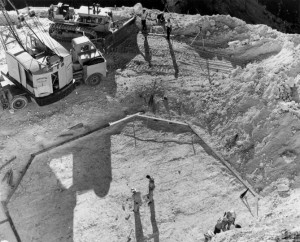Bill Gordon, Father of the Arecibo Observatory
William Gordon, the Cornell University engineer who dreamed up the world’s largest dish antenna, died this week at the age of 92. His recollections of the Arecibo Telescope’s early days were included in a story that ran in our October 1997 issue, not long after the observatory was upgraded with new…


William Gordon, the Cornell University engineer who dreamed up the world's largest dish antenna, died this week at the age of 92. His recollections of the Arecibo Telescope's early days were included in a story that ran in our October 1997 issue, not long after the observatory was upgraded with new telescope feeds:
When Bill Gordon first hiked into the mountain hollow in central Puerto Rico that today cradles the giant Arecibo Radio Telescope, it was nothing but tobacco fields and a small leaf-drying shed surrounded by tropical forest. It was 1958, and Gordon, then a professor of electrical engineering at Cornell University, had come up with a clever idea. His sponsor, the Pentagon’s Advanced Research Projects Agency (ARPA), wanted a radio antenna—a really big antenna—to study the thin upper atmosphere through which ballistic missiles would travel. But the 1,000-foot dish ARPA required would likely collapse under its own weight. Why not use the Earth itself for structural support, Gordon thought.
After searching through textbooks on karst topography—natural limestone depressions found throughout the world—and considering sites in Cuba (“Thank God we didn’t do that in 1958”) and elsewhere, Gordon and his colleagues settled on this particular bowl-shaped valley in Puerto Rico. Five years later, with funding from the Air Force, the Arecibo radio telescope opened for business.